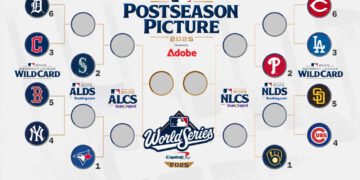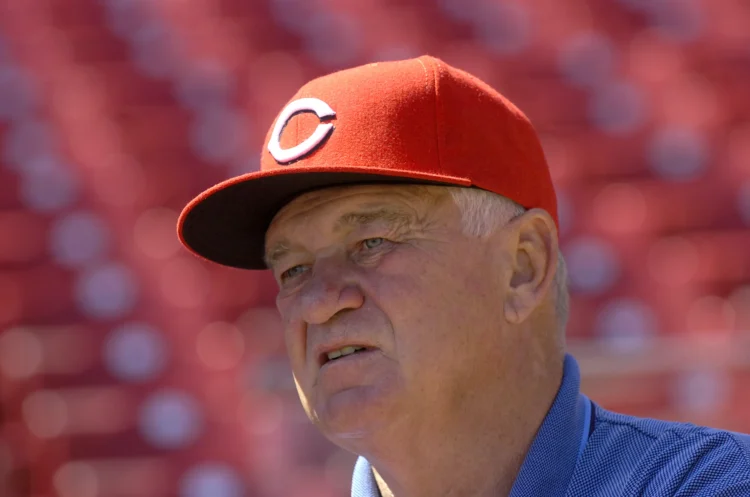The Cincinnati Reds, one of Major League Baseball’s storied franchises, operate in a small-market environment where financial strategy is critical to their success. Unlike big-market teams with vast revenue streams, the Reds heavily depend on their yearly revenue to fund player salaries, making their financial management a fascinating case study in balancing competitiveness with fiscal responsibility. This article explores how the Cincinnati Reds’ revenue streams directly influence their payroll, the challenges they face, and their strategies to remain competitive in the MLB.Cincinnati Reds’ Revenue Streams: The Lifeblood of the FranchiseThe Reds generate revenue through several key channels, including ticket sales, broadcasting rights, sponsorships, merchandise, and MLB’s revenue-sharing system. According to Forbes, the Reds’ total revenue in 2024 was approximately $325 million, a 3% increase from the previous year’s $315 million. This revenue is critical, as it directly funds player salaries, which amounted to $161 million in 2024, including benefits and bonuses.
- Ticket Sales and Attendance: Gate receipts are a significant revenue source for the Reds. In 2024, they generated $67 million from ticket sales, reflecting their reliance on fan turnout at Great American Ball Park. However, attendance has been a challenge, with 2022 seeing the lowest figures since 1984 (1.4 million total, averaging 17,569 per game), a 22% drop from 2019. Declining attendance, driven by poor team performance and fan dissatisfaction, directly impacts the funds available for player salaries.
- Broadcasting Rights: The Reds’ media deal with FanDuel Sports Network (formerly Bally Sports Ohio) provides a substantial portion of their revenue, estimated at tens of millions annually. However, the potential bankruptcy of Diamond Sports Group, which owns the network, threatens this income stream, adding uncertainty to future budgets.
- Sponsorships and Merchandise: Local sponsorships and merchandise sales also contribute to the Reds’ revenue. With a metro area population of 2.3 million, the team generates approximately $79 per fan in local revenues. These funds support operational costs, including payroll, but are limited compared to larger markets.
- MLB Revenue Sharing: As a small-market team, the Reds benefit from MLB’s revenue-sharing system, which redistributes income from high-revenue teams to smaller markets. This helps bridge the gap but doesn’t fully offset the limitations of their market size.
Player Salaries: A Direct Reflection of RevenueThe Reds’ 2025 payroll is projected at approximately $115.7 million, ranking 23rd in MLB and third in the NL Central. This is a significant decrease from their 2024 payroll of $161 million, reflecting a cautious approach to spending. The team’s reliance on yearly revenue is evident in their payroll structure, which includes a mix of high-salary veterans, arbitration-eligible players, and cost-controlled pre-arbitration talent.
- High-Paid Players: In 2025, pitcher Nick Martinez leads the Reds with a $21.05 million salary, followed by Jeimer Candelario ($15 million) and Taylor Rogers ($12 million). These contracts consume a significant portion of the payroll, directly tying the team’s ability to retain or sign high-caliber players to their revenue.
- Arbitration and Pre-Arbitration Players: The Reds rely heavily on cost-controlled players like Elly De La Cruz, Matt McLain, and Andrew Abbott, who earn near the league minimum of $760,000. This strategy allows the team to allocate funds to key veterans while developing young talent, but it hinges on consistent revenue to maintain even modest payrolls.
- Retained Salaries and Dead Money: The Reds also face financial burdens from retained salaries ($16.9 million) and dead money ($3 million) for players no longer on the roster, such as Jeimer Candelario and Jakob Junis. These obligations further strain the budget, making revenue generation critical.
Challenges of Revenue Dependence
Bob Castellini, the owner of The Reds, delineates a financial approach frequently referred to as a “breakeven policy,” that primarily focuses on circumventing financial losses to avert potential cash calls to investors. Although this course of action is monetarily judicious, it impinges the team’s capacity to vie with heavy spending teams such as the Los Angeles Dodgers or New York Yankees. This presents critical challenges that include:
- Attendance Volatility: The Reds’ heavy reliance on gate receipts makes them vulnerable to attendance fluctuations. Poor performance, such as the 2022 season’s 100 losses, led to a significant revenue drop, forcing payroll cuts. Fans on X have expressed frustration, noting that the team’s reluctance to invest in payroll despite revenue streams like $60 million from Bally Sports and $68 million from 2023 gate receipts stifles competitiveness.
- Broadcasting Uncertainty: The potential collapse of Diamond Sports Group could disrupt the Reds’ broadcasting revenue, a critical component of their budget. This uncertainty may force further payroll reductions, limiting the team’s ability to sign or retain talent.
- Small-Market Constraints: With a team valuation of $1.325 billion (27th in MLB), the Reds operate in a smaller market than many competitors. This restricts their revenue potential, making it difficult to sustain high payrolls without significant on-field success to boost attendance and sponsorships.
Strategies to Balance Revenue and PayrollDespite these challenges, the Reds employ several strategies to maximize their revenue and maintain a competitive roster:
- Investing in Young Talent: The Reds have built a strong core of young, cost-controlled players like Elly De La Cruz, Hunter Greene, and Rhett Lowder. These players provide high value at low cost, allowing the team to allocate revenue to key veterans while keeping payroll manageable.
- Trading for Value: The Reds have made strategic trades to acquire players like Brady Singer and Gavin Lux, who offer arbitration-controlled contracts that balance cost and performance. This approach stretches their revenue further.
- Reinvesting Profits: Castellini’s policy of reinvesting operating surpluses into the team, rather than distributing them to owners, supports payroll and infrastructure improvements. However, this is contingent on generating positive revenue, which has been inconsistent.
- Fan Engagement: The Reds are working to boost attendance through promotions, community engagement, and highlighting exciting players like De La Cruz, who is seen as a potential superstar. Increased attendance could provide the revenue needed to support higher payrolls
The Fan Perspective: Frustration and HopeFans have voiced concerns about the Reds’ conservative spending, especially given their revenue potential. Posts on X highlight the gap between the team’s 2019 payroll of $148 million (adjusted for inflation) and the 2025 projection of $115.7 million, a $32.3 million decrease. Fans argue that the team’s reliance on cheap contracts for young players should free up funds for impactful signings, yet management often cites financial constraints. Despite this, optimism persists with new manager Terry Francona and a talented young core, which could drive attendance and revenue if the team performs well in 2025.
Looking Ahead: Revenue and Payroll in 2025 and BeyondThe Reds’ 2025 payroll of $115.7 million reflects their cautious approach, but their revenue outlook remains critical. With potential broadcasting revenue disruptions and the need to boost attendance, the team must maximize every dollar. Their luxury tax payroll, estimated at $143.5 million, remains well below the 2025 threshold of $241 million, giving them some flexibility to add talent if revenue allows.
To remain competitive, the Reds must address their revenue challenges by improving on-field performance, engaging fans, and securing stable media deals. A successful 2025 season could increase gate receipts and sponsorships, providing the funds needed to bolster payroll and compete in the NL Central.ConclusionThe Cincinnati Reds’ reliance on yearly revenue to fund player salaries underscores the challenges of operating in a small market. With revenue streams like ticket sales, broadcasting rights, and sponsorships directly dictating their payroll, the Reds must navigate attendance volatility and media uncertainties while leveraging their young talent. By balancing cost-controlled players with strategic veteran signings and reinvesting profits, the Reds aim to remain competitive. As they enter the 2025 season under Terry Francona’s leadership, their ability to boost revenue through fan engagement and on-field success will be crucial to sustaining a robust payroll and chasing postseason glory.



















Recent Comments